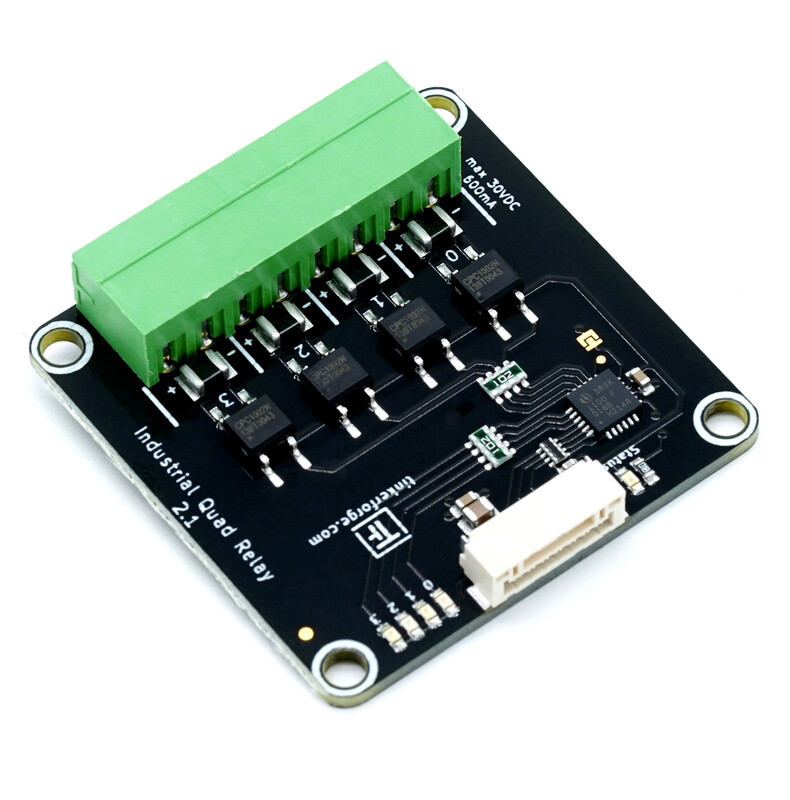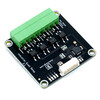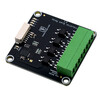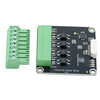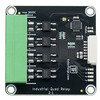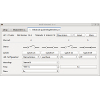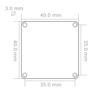- Getting Started
- Hardware
- Bricks
- Bricklets
- Accelerometer Bricklet 2.0
- Air Quality Bricklet
- Ambient Light Bricklet 3.0
- Analog In Bricklet 3.0
- Analog Out Bricklet 3.0
- Barometer Bricklet
- Barometer Bricklet 2.0
- Breakout Bricklet
- CAN Bricklet
- CAN Bricklet 2.0
- CO2 Bricklet 2.0
- Color Bricklet
- Color Bricklet 2.0
- Compass Bricklet
- DC Bricklet 2.0
- Distance IR Bricklet
- Distance IR Bricklet 2.0
- Distance US Bricklet 2.0
- DMX Bricklet
- Dual Button Bricklet 2.0
- Dust Detector Bricklet
- E-Paper 296x128 Bricklet
- Energy Monitor Bricklet
- GPS Bricklet 2.0
- GPS Bricklet 3.0
- Hall Effect Bricklet
- Hall Effect Bricklet 2.0
- Humidity Bricklet 2.0
- IMU Bricklet 3.0
- Industrial Analog Out Bricklet 2.0
- Industrial Counter Bricklet
- Industrial Digital In 4 Bricklet 2.0
- Industrial Digital Out 4 Bricklet
- Industrial Digital Out 4 Bricklet 2.0
- Industrial Dual 0-20mA Bricklet
- Industrial Dual 0-20mA Bricklet 2.0
- Industrial Dual AC In Bricklet
- Industrial Dual AC Relay Bricklet
- Industrial Dual Analog In Bricklet 2.0
- Industrial Dual Relay Bricklet
- Industrial PTC Bricklet
- Industrial Quad Relay Bricklet 2.0
- IO-16 Bricklet
- IO-16 Bricklet 2.0
- IO-4 Bricklet 2.0
- Isolator Bricklet
- Joystick Bricklet
- Joystick Bricklet 2.0
- Laser Range Finder Bricklet 2.0
- LCD 128x64 Bricklet
- LCD 20x4 Bricklet
- LED Strip Bricklet 2.0
- Line Bricklet
- Linear Poti Bricklet
- Linear Poti Bricklet 2.0
- Load Cell Bricklet 2.0
- Motion Detector Bricklet 2.0
- Motorized Linear Poti Bricklet
- Multi Touch Bricklet
- Multi Touch Bricklet 2.0
- NFC Bricklet
- OLED 128x64 Bricklet 2.0
- OLED 64x48 Bricklet
- One Wire Bricklet
- Outdoor Weather Bricklet
- Particulate Matter Bricklet
- Performance DC Bricklet
- Piezo Speaker Bricklet
- Piezo Speaker Bricklet 2.0
- Real-Time Clock Bricklet
- Real-Time Clock Bricklet 2.0
- Remote Switch Bricklet 2.0
- RGB LED Bricklet 2.0
- RGB LED Button Bricklet
- Rotary Encoder Bricklet 2.0
- Rotary Poti Bricklet
- Rotary Poti Bricklet 2.0
- RS232 Bricklet
- RS232 Bricklet 2.0
- RS485 Bricklet
- Segment Display 4x7 Bricklet
- Segment Display 4x7 Bricklet 2.0
- Servo Bricklet 2.0
- Silent Stepper Bricklet 2.0
- Solid State Relay Bricklet 2.0
- Sound Intensity Bricklet
- Sound Pressure Level Bricklet
- Temperature Bricklet
- Temperature Bricklet 2.0
- Temperature IR Bricklet 2.0
- Thermal Imaging Bricklet
- Thermocouple Bricklet 2.0
- Tilt Bricklet
- UV Light Bricklet 2.0
- Voltage/Current Bricklet 2.0
- XMC1400 Breakout Bricklet
- Master Extensions
- Power Supplies
- Discontinued Products
- Timeline
- Software
- Kits
- Embedded Boards
- Specifications
Industrial Quad Relay Bricklet 2.1¶
Features¶
- 4 Channel Solid State Relay
- Switch up to 30V with 0.6A
- Galvanically isolated
Description¶
The Industrial Quad Relay Bricklet 2.1 can be used to extend Bricks by four galvanically isolated solid state relays. Each channel can switch currents of up to 0.6 Ampere with 30 Volt. Output isolation permits the usage without a direct electric connection, such that ground loops can be prevented and an additional degree of safety is added.
Typical applications are the interfacing of industrial control, such as PLC's or frequency converters, or the usage in environments were electrical ground levels can not be connected.
Technical Specifications¶
| Property | Value |
|---|---|
| Current Consumption | 31mW (6.2mA at 5V)
+ 3mW (0.6mA at 5V) per activated relay
|
| Output Type | Four galvanically isolated solid state relays |
| Maximum Switching Current | 0.6A |
| Maximum Switching Voltage | 30V |
| Isolation | 1500Vrms (datasheet value) |
| Dimensions (W x D x H) | 40 x 40 x 11mm (1.57 x 1.57 x 0.43") |
| Weight | 9g |
Resources¶
Connectivity¶
The Industrial Quad Relay Bricklet has an 8 pole terminal. Please see the picture below for the pinout.
Note
Please note that since version 2.1 the polarity of the load has to be considered.
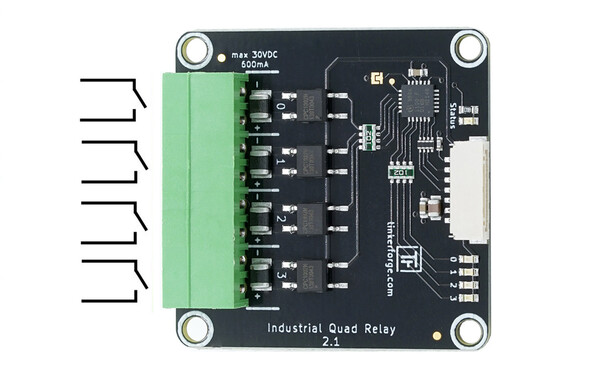
Channel Status LEDs¶
The Bricklet has the standard status LED with four additional LEDs (one for each channel).
By default the channel status LEDs are on if the corresponding channel is switched on and off otherwise. You can also turn each LED individually on/off and show other status information through the API.
Test your Industrial Quad Relay Bricklet 2.1¶
To test a Industrial Quad Relay Bricklet 2.0 you need to have Brick Daemon and Brick Viewer installed. Brick Daemon acts as a proxy between the USB interface of the Bricks and the API bindings. Brick Viewer connects to Brick Daemon. It helps to figure out basic information about the connected Bricks and Bricklets and allows to test them.
Connect the Industrial Quad Relay Bricklet 2.0 to a Brick with a Bricklet Cable. For a simple test we will connect a battery and a LED to test the Bricklet (see picture below).
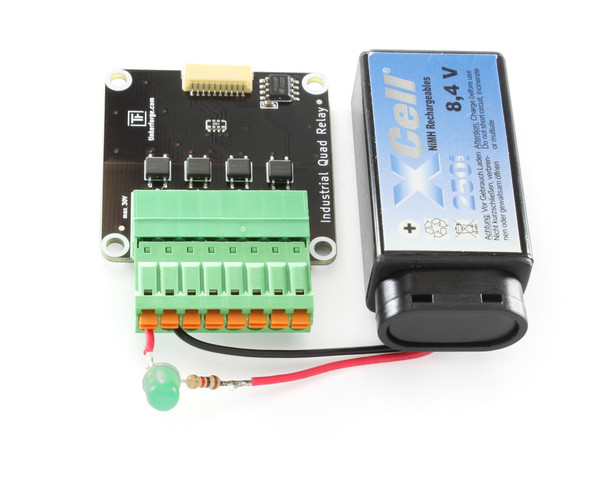
If you connect the Brick to the PC over USB, you should see a new tab named "Industrial Quad Relay Bricklet 2.0" in the Brick Viewer after a moment. Select this tab.
If everything went as expected you can switch the LED by changing the output state with the Brick Viewer.
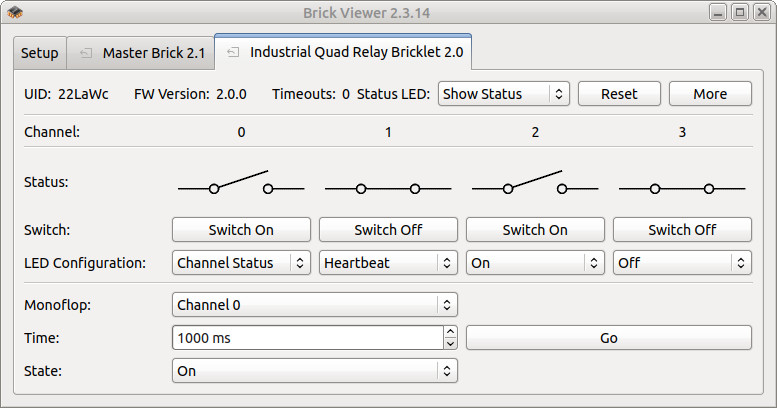
After this test you can go on with writing your own application. See the Programming Interface section for the API of the Industrial Quad Relay Bricklet 2.0 and examples in different programming languages.
Case¶
A laser-cut case for the Industrial Quad Relay Bricklet 2.0 is available.
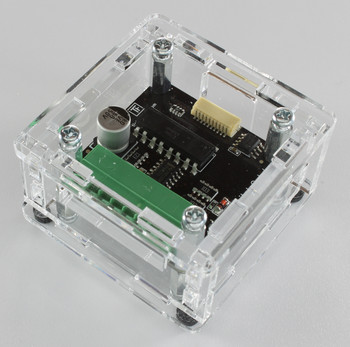
The assembly is easiest if you follow the following steps:
- Screw spacers to the Bricklet,
- screw bottom plate to bottom spacers,
- build up side plates,
- plug side plates into bottom plate and
- screw top plate to top spacers.
Below you can see an exploded assembly drawing of the Industrial Quad Relay Bricklet case:
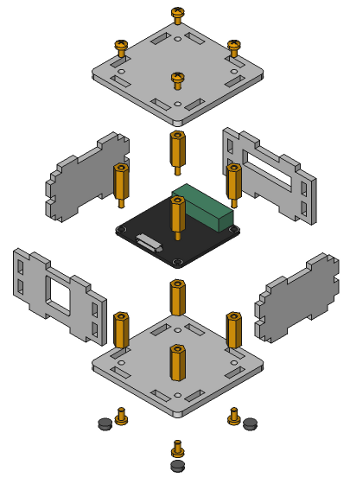
Hint: There is a protective film on both sides of the plates, you have to remove it before assembly.
Changes between version 2.0 and 2.1¶
Version 2.0 was equipped with four CPC1020N solid state relays with a maximum voltage of 30V and a maximum current of 1.2A. These solid state relays are bipolar, what means that polarity does not need to be considered. These relays were not able to handle AC loads.
The Industrial Quad Relay Bricklet is often used to switch 24V solenoids. Solenoids are inductive loads which produce high voltages when switching. Since the maximum voltage of 30V could be exceeded without triggering the embedded 30V varistor there were cases where the relays were damaged.
Therefore we have changed the solid state relay type to a unipolar 60V variant for version 2.1. The smaller maximum current of 0.6A is in most cases not relevant since most loads (solenoids etc.) could be controlled with this smaller current. The doubled maximum voltage instead guarantees, that the Industrial Quad relay Bricklet 2.1 can be used with 24V solenoids.
Programming Interface¶
See Programming Interface for a detailed description.
| Language | API | Examples | Installation |
|---|---|---|---|
| C/C++ | API | Examples | Installation |
| C/C++ for Microcontrollers | API | Examples | Installation |
| C# | API | Examples | Installation |
| Delphi/Lazarus | API | Examples | Installation |
| Go | API | Examples | Installation |
| Java | API | Examples | Installation |
| JavaScript | API | Examples | Installation |
| LabVIEW | API | Examples | Installation |
| Mathematica | API | Examples | Installation |
| MATLAB/Octave | API | Examples | Installation |
| MQTT | API | Examples | Installation |
| openHAB | API | Examples | Installation |
| Perl | API | Examples | Installation |
| PHP | API | Examples | Installation |
| Python | API | Examples | Installation |
| Ruby | API | Examples | Installation |
| Rust | API | Examples | Installation |
| Shell | API | Examples | Installation |
| Visual Basic .NET | API | Examples | Installation |
| TCP/IP | API | ||
| Modbus | API |


